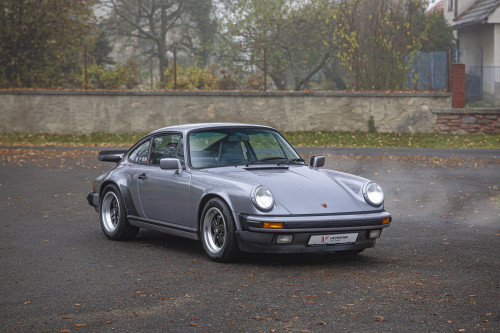BMW’s E30 3-Series spanned a decade of production and came in two-door, four-door, convertible and estate body styles. It had over a half dozen different four or six-cylinder engines, including a diesel, and models ranged from the humble 90-hp 316 to the mighty 150-mph M3 Sport Evo. It’s the car that introduced many BMW fanatics to the marque and in terms of fun, practical, reliable, comfortable, well balanced and affordable sports sedans, there are few cars quite like the E30. There’s also lots of choice when it comes to buying and the support from the aftermarket and enthusiast community is tremendous.
The number of E30 models can be daunting, but one universal characteristic is a balanced chassis and sharp, predictable handling thanks to MacPherson struts up front and the semi-trailing arm rear suspension. One 1983 Car and Driver test declared that “its handling and roadholding are magnificent. The tradition of bad behavior at the back end of a BMW has been allowed to lapse.” And while even the newest E30s are now almost old enough to get historic plates, today’s enthusiasts can still count on a high degree of build quality. Daily driving a sorted one is perfectly feasible. E30s are also unusual in today’s world of high-tech BMWs in that owners can do most of the maintenance themselves rather than take yet another trip to the dealer as many of today’s Bimmer owners have to.
The E30 underwent dozens of changes throughout its production run and the car varied from market to market. Back when German car naming schemes made sense, BMW’s model names were fairly easy to understand. For example, a 318i was a BMW 3-Series with a 1.8-liter engine and fuel injection. Six-cylinder models with BMW’s fantastic M20 engine included the 320, 323 and 325 models. Transmissions for E30 models, meanwhile, included Getrag 4- or 5-speed boxes as well as ZF automatics.
Car and Driver called the E30 a “blunt car for sharp driving”, and while it may be a bit unfair to call the well thought out and thoroughly engineered car “blunt”, it’s still an apt description for a car that’s as good at the daily commute as it is on a twisty country road.
This car has been fully restored. Upholstery in original without any damage. Restored to all the details inside and out. About 120 hours of detailing were devoted to correct all the small details. The car played in 2 movies and various commercials. The photos do not reflect everything, but the car is in a quite unique color combination, because this combination of the paint, upholstery and factory tinted windows gives a very nice visual effect. The car has been fully serviced mechanically, the suspension has been also rebuilt, the propeller shaft is balanced, it drives very well, fluid and oil changed, no oil leaks, a new brake system and all other mechanical things that needed to be replaced were all done.
Additional equipment: sunroof - factory tinted windows - rear spoiler - sports steering wheel. Additional items: front and rear strut - has a German TUV - coilover suspension - front lens lamps - yellow from M3. It can be now registered as a historic vehicle.
| Production date | 1986 |
|---|---|
| Body Type | Coupe |
| Engine | 2.674 ccm, 122 PS, I6 |
| transmission | Manual |
| Steering | Left Hand Drive |
|---|---|
| Layout | Rear Wheel Drive |
| Color - exterior | Bronzitbeige metallic |
| Color - interior | Brown |
| Miles/Kilometers shown | 186.600 kms |
|---|---|
| Chassis / VIN | WBAAB510901231948 |
| Location - Country | Germany |
| Location - City | Kiel |
2-door sedan body type; RWD (rear-wheel drive), manual 5-speed gearbox; gasoline (petrol) engine with displacement: 2693 cm3, advertised power: 90 kW / 121 hp / 122 PS (DIN), torque: 230 Nm; characteristic dimensions: outside length: 4325 mm, width: 1645 mm, wheelbase: 2570 mm; reference weights: base curb weight: 1120 kg; top speed: 193 km/h (120 mph) (declared by factory); accelerations: 0-60 mph 9.5 s, 0-100 km/h 10.1 s (declared by factory)

Písek, Czechia

Písek, CZ

Písek, CZ

Písek, CZ

Písek, CZ

Písek, CZ